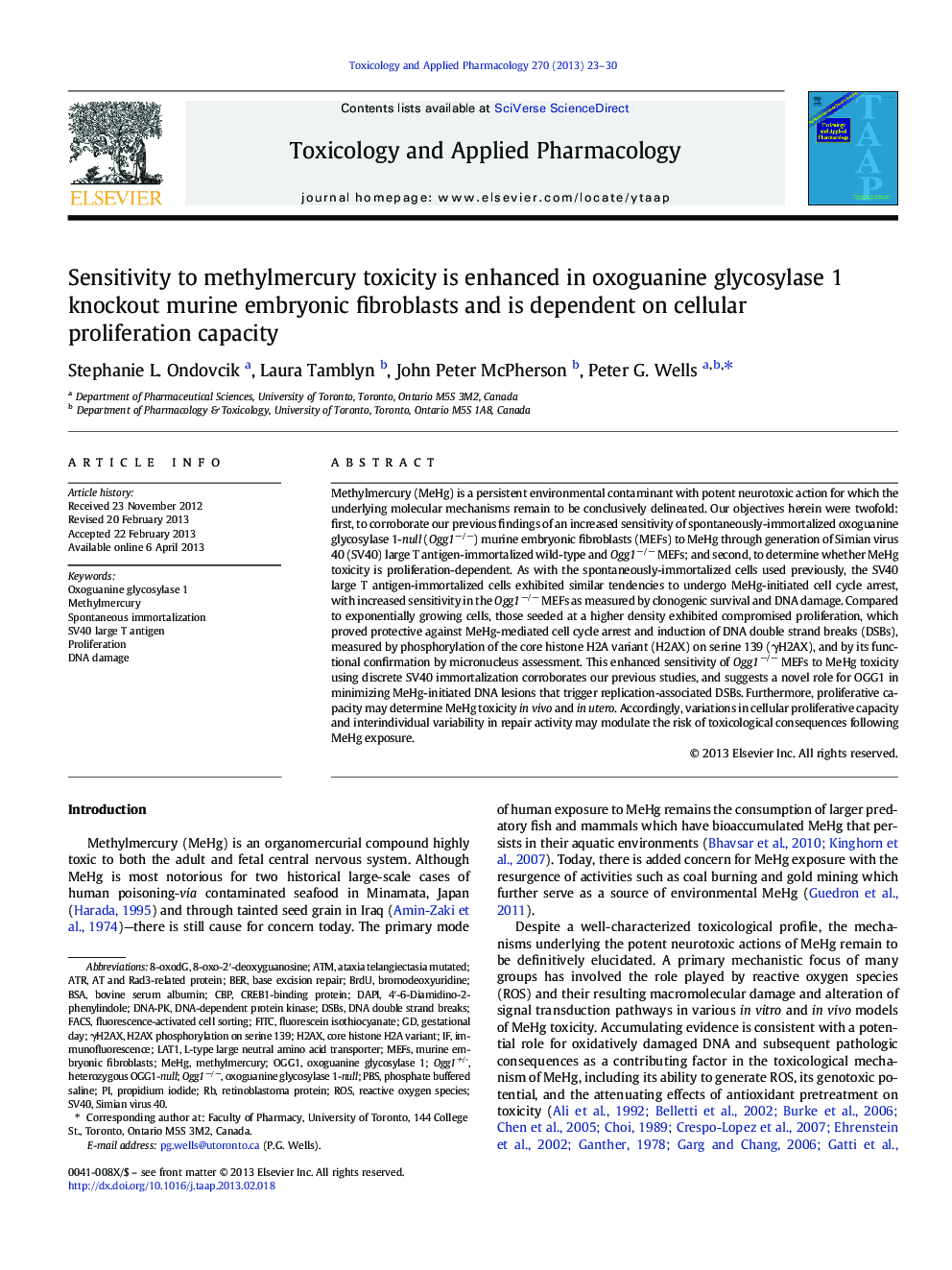| کد مقاله | کد نشریه | سال انتشار | مقاله انگلیسی | نسخه تمام متن |
|---|---|---|---|---|
| 2568865 | 1128492 | 2013 | 8 صفحه PDF | دانلود رایگان |

• SV40 large T antigen-immortalized Ogg1−/− cells are more sensitive to MeHg.
• Sensitivity to MeHg is dependent on cellular proliferation capacity.
• OGG1 maintains genomic integrity following MeHg-initiated DNA damage.
• OGG1 may limit MeHg-initiated DNA lesions that trigger replication-associated DSBs.
• Variations in proliferation and repair activity may modulate toxicological risk.
Methylmercury (MeHg) is a persistent environmental contaminant with potent neurotoxic action for which the underlying molecular mechanisms remain to be conclusively delineated. Our objectives herein were twofold: first, to corroborate our previous findings of an increased sensitivity of spontaneously-immortalized oxoguanine glycosylase 1-null (Ogg1−/−) murine embryonic fibroblasts (MEFs) to MeHg through generation of Simian virus 40 (SV40) large T antigen-immortalized wild-type and Ogg1−/− MEFs; and second, to determine whether MeHg toxicity is proliferation-dependent. As with the spontaneously-immortalized cells used previously, the SV40 large T antigen-immortalized cells exhibited similar tendencies to undergo MeHg-initiated cell cycle arrest, with increased sensitivity in the Ogg1−/− MEFs as measured by clonogenic survival and DNA damage. Compared to exponentially growing cells, those seeded at a higher density exhibited compromised proliferation, which proved protective against MeHg-mediated cell cycle arrest and induction of DNA double strand breaks (DSBs), measured by phosphorylation of the core histone H2A variant (H2AX) on serine 139 (γH2AX), and by its functional confirmation by micronucleus assessment. This enhanced sensitivity of Ogg1−/− MEFs to MeHg toxicity using discrete SV40 immortalization corroborates our previous studies, and suggests a novel role for OGG1 in minimizing MeHg-initiated DNA lesions that trigger replication-associated DSBs. Furthermore, proliferative capacity may determine MeHg toxicity in vivo and in utero. Accordingly, variations in cellular proliferative capacity and interindividual variability in repair activity may modulate the risk of toxicological consequences following MeHg exposure.
Journal: Toxicology and Applied Pharmacology - Volume 270, Issue 1, 1 July 2013, Pages 23–30